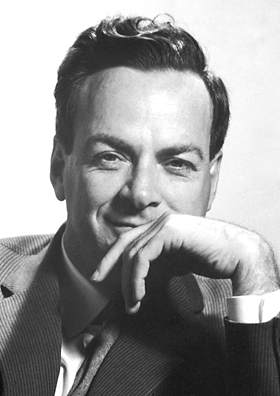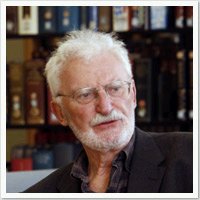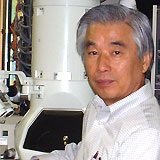History of nanotechnology facts for kids
The history of nanotechnology is about how the idea and science of working with super tiny things developed over time. Nanotechnology is a new field, but its main ideas have been around for a while. It really took off in the 1980s. This was thanks to new tools like the scanning tunneling microscope (invented in 1981) and the discovery of fullerenes (in 1985). Also, a book called Engines of Creation (1986) helped explain and popularize the goals of nanotechnology.
In the early 2000s, people started talking more about nanotechnology. There were discussions about its possible future impact and whether ideas like molecular nanotechnology were truly possible. Governments also began to support research in this area. Around this time, some nanotechnology products started appearing in stores. These were mostly everyday items using tiny particles, not the super advanced machines some people imagined.
Contents
Ancient Uses of Nanomaterials
Even though nanotechnology sounds very modern, people have used materials with tiny parts for a long time!
For example, tiny carbon nanotubes have been found in old pottery from Keeladi, India, dating back to around 600–300 BC. We don't know if people made them on purpose or how they formed. Also, tiny Cementite nanowires were seen in Damascus steel, a special metal from around 900 AD. How these formed is also a mystery.
Artisans in ancient Mesopotamia (around the ninth century) used nanoparticles to make pots glitter. This was a very early use of these tiny materials.
Later, in the Middle Ages and Renaissance, pottery often had a shiny gold or copper look. This special shine, called luster, comes from a thin metallic layer on the pottery's surface. This layer contains tiny silver and copper nanoparticles mixed into the glaze. Artisans made these nanoparticles by adding copper and silver salts and oxides with vinegar, ochre, and clay to the pottery. This technique started in the Muslim world. Since Muslims were not allowed to use real gold in art, they found a way to create a similar golden effect using luster.
Key Ideas Behind Nanotechnology
Richard Feynman's Vision
The American physicist Richard Feynman gave a famous talk on December 29, 1959, called "There's Plenty of Room at the Bottom." Many people say this talk inspired the field of nanotechnology.
Feynman talked about how we could learn to move individual atoms and molecules. He imagined using one set of precise tools to build smaller tools, and then even smaller ones, until we reached the tiny scale needed. He also pointed out that at such small sizes, some rules of physics would change. For example, gravity would become less important, while forces like surface tension and Van der Waals attraction would become more important.
After Feynman passed away, some experts studied how much his talk really influenced early nanotechnology. They found that for about 20 years after it was published, it wasn't cited much in scientific papers. Its influence grew more in the 1990s, especially after the term "nanotechnology" became popular. This happened when K. Eric Drexler used it in his 1986 book, Engines of Creation. Drexler took Feynman's idea of tiny factories and added the idea that they could make copies of themselves using computers.
So, even if Feynman's talk didn't directly start the field, it later became a very important part of nanotechnology's history. It connected the new field to a famous scientist and Nobel Prize winner.
Norio Taniguchi Coins the Term
A Japanese scientist named Norio Taniguchi from Tokyo University of Science was the first to use the word "nano-technology." He used it in a conference in 1974. He was describing how to make tiny parts for semiconductors, controlling them at the nanometer level.
His definition was: "'Nano-technology' mainly consists of the processing of, separation, consolidation, and deformation of materials by one atom or one molecule." However, the term wasn't widely used again until 1981.
K. Eric Drexler's Contributions
In the 1980s, K. Eric Drexler explored the idea of nanotechnology in great detail. He focused on precisely moving individual atoms and molecules, not just dealing with them randomly. He wrote two important books that highlighted the importance of tiny devices and phenomena.
In 1980, Drexler read Feynman's 1959 talk. This inspired his first scientific paper on the topic, published in 1981. Drexler independently used the term "nanotechnology" in his 1986 book, Engines of Creation: The Coming Era of Nanotechnology. In this book, he suggested the idea of a nanoscale "assembler." This would be a tiny machine that could build copies of itself and other complex items. He also introduced the term "grey goo" to describe what might happen if a self-replicating machine, able to work on its own, was built and released without control. Drexler's vision is often called "Molecular Nanotechnology" (MNT).
His Ph.D. work at the MIT Media Lab in 1991 was the first doctoral degree focused on molecular nanotechnology. His thesis was later published as Nanosystems: Molecular Machinery, Manufacturing, and Computation. Drexler also started the Foresight Institute in 1986 to prepare for the future of nanotechnology.
Scientific Discoveries and Progress
Nanotechnology and nanoscience really took off in the early 1980s. Two big things happened: the start of cluster science and the invention of the scanning tunneling microscope (STM). These led to the discovery of fullerenes in 1985 and the structure of carbon nanotubes in 1991.
Invention of Scanning Probe Microscopy
The scanning tunneling microscope (STM) is a tool that lets scientists see surfaces at the atomic level. It was created in 1981 by Gerd Binnig and Heinrich Rohrer at IBM Zurich Research Laboratory. They won the Nobel Prize in Physics in 1986 for this invention. Binnig, Calvin Quate, and Christoph Gerber also invented the first atomic force microscope in 1986.
In 1989, IBM researcher Don Eigler was the first to move individual atoms using an STM. He used 35 Xenon atoms to spell out the IBM logo. He received the 2010 Kavli Prize in Nanoscience for this amazing work.
Advances in Colloid Science
The study of colloids (mixtures where tiny particles are spread throughout another substance) has been around for almost a century. But it later became important for nanotechnology.
In the early 1900s, Richard Adolf Zsigmondy, who won the 1925 Nobel Prize in Chemistry, made the first observations and size measurements of nanoparticles. He studied gold sols (tiny gold particles in liquid) and other nanomaterials as small as 10 nanometers. He used a special ultramicroscope that could see particles much smaller than the light wavelength. Zsigmondy was also the first to use the term "nanometer" to describe particle size.
In the 1920s, Irving Langmuir, who won the 1932 Nobel Prize in Chemistry, and Katharine B. Blodgett introduced the idea of a monolayer. This is a layer of material that is only one molecule thick.
In 1974, a process called atomic layer deposition was developed in Finland. This method allows scientists to deposit very thin films, one atomic layer at a time.
Discovery of Fullerenes
Fullerenes were discovered in 1985 by Harry Kroto, Richard Smalley, and Robert Curl. They won the 1996 Nobel Prize in Chemistry for this. They found C60, a new form of carbon, which looked like a tiny soccer ball. This was the third allotropic form of carbon, after diamond and graphite.
The discovery of carbon nanotubes is mostly credited to Sumio Iijima of NEC in 1991. Carbon nanotubes are like tiny, rolled-up sheets of carbon atoms. Iijima found multi-walled carbon nanotubes in 1991. Soon after, scientists predicted that if single-walled carbon nanotubes could be made, they would have amazing electrical properties. This created a lot of excitement around carbon nanotubes.
In the early 1990s, Huffman and Kraetschmer from the University of Arizona found a way to make and clean large amounts of fullerenes. This allowed many researchers to study and use them. Soon after, a form of C60 was found to be a superconductor at a certain temperature.
Government and Business Support
National Nanotechnology Initiative

The National Nanotechnology Initiative (NNI) is a United States government program for nanotechnology research and development. It helps different government agencies work together on nanotechnology research. Its goals are to:
- Support top-level nanotechnology research.
- Help new technologies become commercial products.
- Develop education, skilled workers, and tools for nanotechnology.
- Ensure nanotechnology develops responsibly.
Mihail Roco was a key person in starting the NNI. He suggested it to the White House in 1999.
President Bill Clinton supported nanotechnology development. In a speech in 2000, he said, "Some of our research goals may take twenty or more years to achieve, but that is precisely why there is an important role for the federal government." He even mentioned Richard Feynman's ideas to explain why this research was important.
President George W. Bush also increased funding for nanotechnology. In 2003, he signed a law that allowed for $3.63 billion to be spent on nanotechnology research over four years. The NNI budget has continued to grow, showing steady investment in this field.
First Commercial Uses
In the early 2000s, nanotechnology started appearing in everyday products. Most of these uses involved adding tiny particles, called passive nanomaterials, to existing products.
Some examples include:
- Titanium dioxide and zinc oxide nanoparticles in sunscreens, cosmetics, and some foods.
- Silver nanoparticles in food packaging, clothing, and cleaning products (like Silver Nano appliances).
- Carbon nanotubes used to make stain-resistant fabrics.
- Cerium oxide used as a fuel catalyst.
By 2011, the Project on Emerging Nanotechnologies estimated that over 1300 products using nanotechnology were available to the public. New ones were appearing almost every week!
However, some experts, like David Berube, have pointed out that many products sold as "nanotechnology" are actually just new uses of materials science. They believe that the "nano" label is sometimes used to attract funding, even if the technology isn't as advanced as the big ideas of molecular manufacturing.
More recently, in the early 2000s, the invention of special lipids (fats) led to the development of solid lipid nanoparticles. These became very important in the 2020s. They are now the most successful way to deliver medicines using nanoparticles, especially because they are used in several mRNA vaccines during the COVID-19 pandemic.
See also
 In Spanish: Historia de la nanotecnología para niños
In Spanish: Historia de la nanotecnología para niños
- Timeline of carbon nanotubes
- Discovery of graphene
- History of DNA nanotechnology







